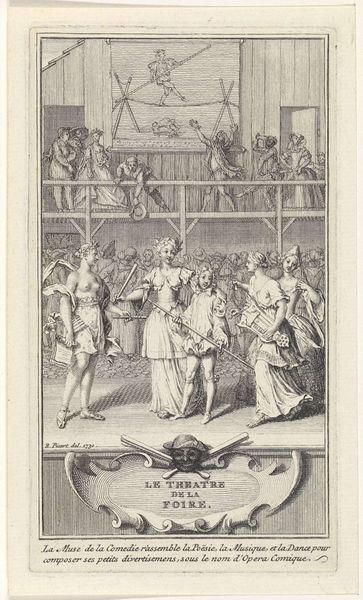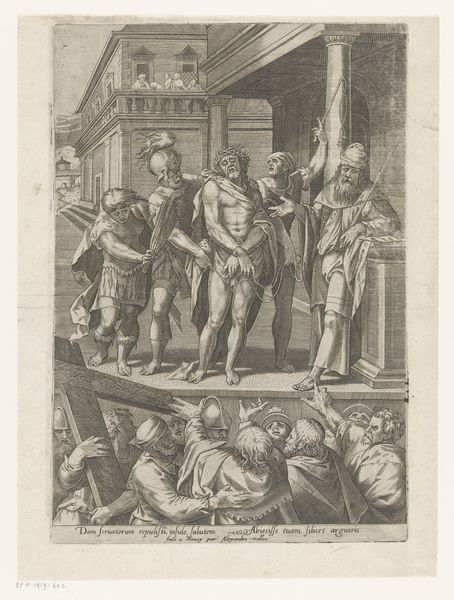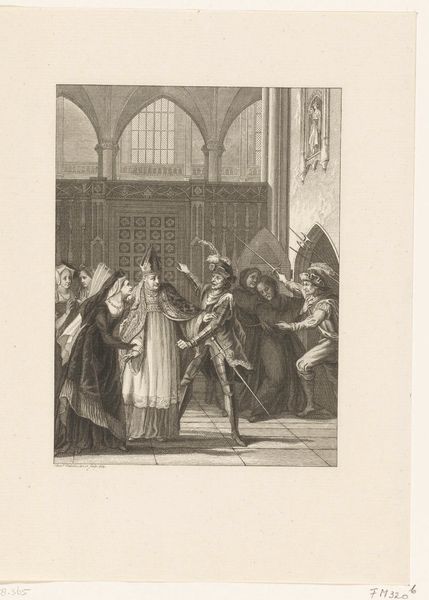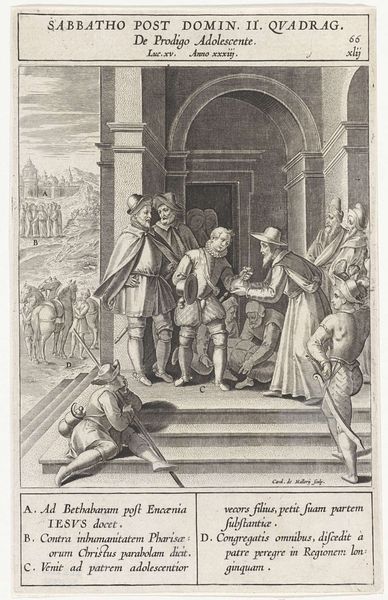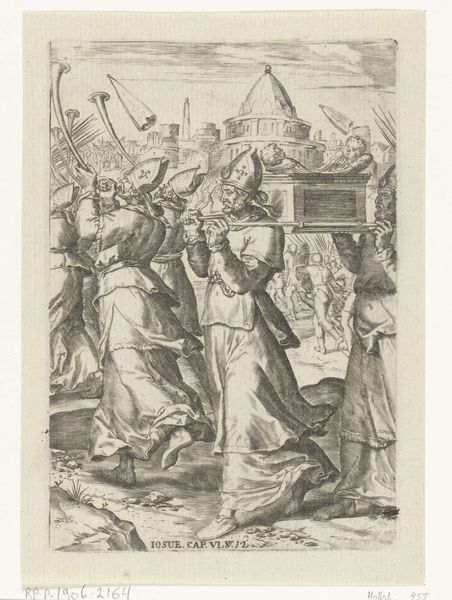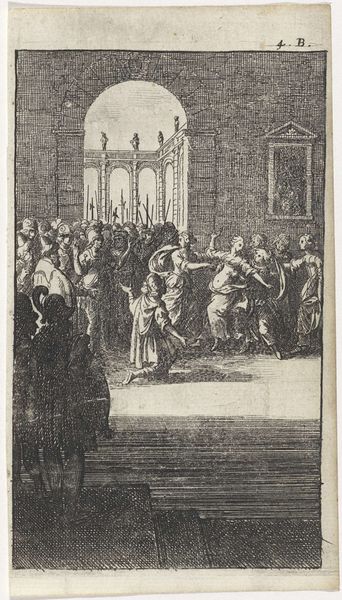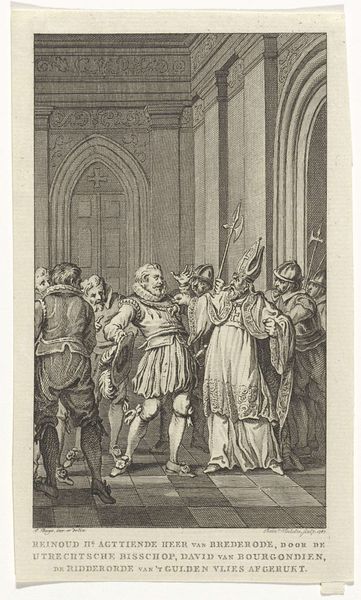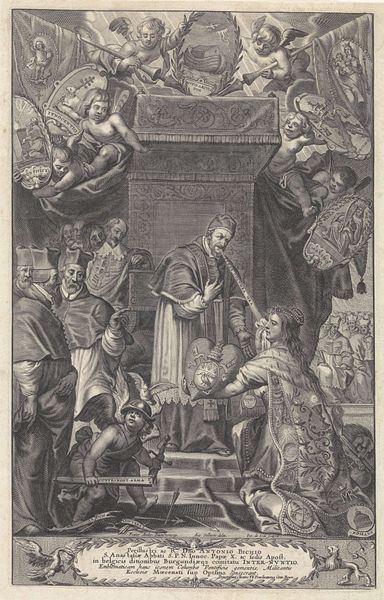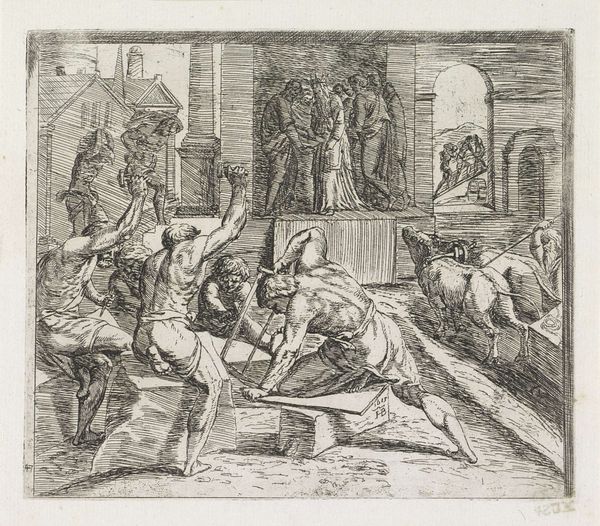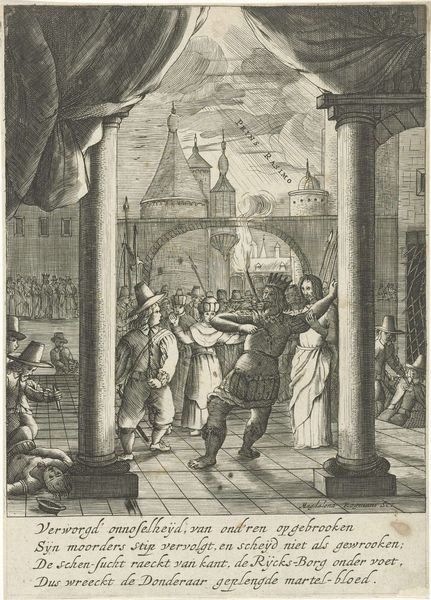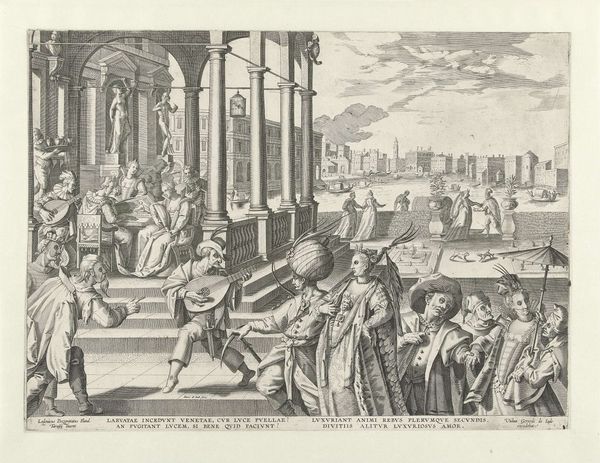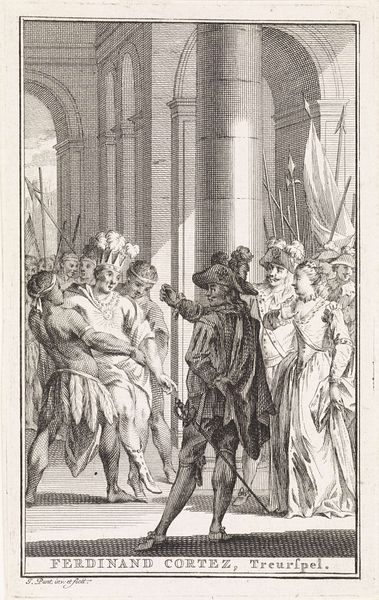
print, engraving
#
baroque
# print
#
old engraving style
#
figuration
#
history-painting
#
northern-renaissance
#
engraving
Dimensions: height 204 mm, width 140 mm
Copyright: Rijks Museum: Open Domain
Nicolaes de Bruyn etched this "Ecce Homo," or "Behold the Man," sometime before his death in 1656. We see Christ presented to the crowd, wearing the crown of thorns, a powerful symbol of his suffering and impending sacrifice. This act of presentation, laden with the complex interplay of divine and human, authority and submission, echoes through time. The scepter, a symbol of power, becomes a mocking tool in this context, and the crowd's reaction is a chilling reminder of collective judgment. This scene is not merely historical; it's a mirror reflecting humanity's capacity for both reverence and cruelty. Consider how the crown of thorns reappears in different forms throughout history, a twisted echo in the imagery of martyrs and the persecuted, continually reminding us of the potent blend of suffering and symbolic power. The emotional weight of this moment engages us on a subconscious level, transcending the boundaries of time and culture. The cyclical progression of these symbols endures, resurfacing and evolving, perpetually asking us to confront the complex interplay of power, suffering, and redemption.
Comments
No comments
Be the first to comment and join the conversation on the ultimate creative platform.
